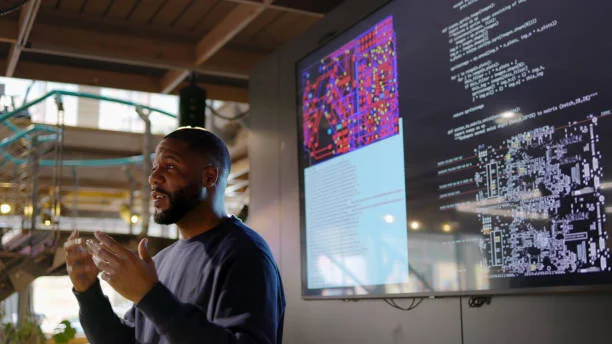Effective Learning Strategies Overview
Active Participation
Active participation in learning involves actively engaging with the material rather than passively listening. This includes asking questions, participating in discussions, and applying concepts in real-world scenarios using active learning strategies.
Research shows that active participation significantly enhances understanding and retention of information. Learners reinforce their knowledge and develop a deeper understanding of the subject by taking notes, discussing topics with peers, and teaching others.
Time Management
Effective time management is crucial for successful learning. Prioritizing tasks, creating a study schedule, and setting achievable goals help students maximise their study time.
Students who excel in time management experience reduced stress levels and improved academic performance. Breaking down study sessions into shorter intervals, focusing on one task at a time, and avoiding multitasking can enhance productivity and learning outcomes.
Clear Goal-Setting Techniques
Specific Goals
Setting specific goals helps in providing a clear direction for your learning journey. You can focus your efforts effectively by defining precisely what you want to achieve.
Having specific goals allows you to track your progress more accurately. When you know precisely what you aim for, measuring how far you have come and what steps you still need to take becomes easier.
Realistic Milestones
Breaking down your goals into realistic milestones can make learning more manageable. Achieving these smaller targets provides a sense of accomplishment and motivates you to keep moving forward.
Creating realistic milestones also prevents feeling overwhelmed by the enormity of a significant goal. Each milestone is a stepping stone towards your ultimate objective, making the learning journey smoother and more enjoyable.
Establishing a Productive Schedule
Consistent Routine
Creating a consistent routine is crucial for effective learning. Set specific times for studying and breaks.
Focus on prioritizingz tasks based on their importance and urgency. This helps in managing time efficiently.
Time Blocking
Time blocking involves allocating specific time slots for different activities. Use a planner to schedule study sessions, assignments, and revisions.
Implement the Pomodoro technique, where you work for 25 minutes and then take a 5-minute break. This method enhances focus and productivity.
Avoid Multitasking
Avoid multitasking, as it can reduce efficiency and lead to distractions. Concentrate on one task at a time to improve concentration.
Create a study environment free from distractions. Find a quiet place with good lighting and minimal interruptions.
Using the Pomodoro Technique
Time Management
The Pomodoro Technique is a time management method developed by Francesco Cirillo in the late 1980s. It involves breaking work into intervals, traditionally 25 minutes long, separated by short breaks.
This technique improves productivity by allowing individuals to focus intensely for short periods, known as Pomodoros, and then take brief breaks to recharge. Dividing work into manageable segments helps combat procrastination and maintain focus.
Increased Focus
One of the key benefits of using the Pomodoro Technique is its ability to enhance focus. Individuals commit to working without distractions for a specific period by setting a timer for each Pomodoro. This focused approach can lead to higher quality work and increased efficiency.
Enhanced Productivity
The structured nature of the Pomodoro Technique promotes productivity by encouraging individuals to work in concentrated bursts. The regular breaks prevent burnout and help maintain motivation throughout the day.
Improved Time Management
Implementing the Pomodoro Technique can significantly improve time management skills. By allocating specific time slots for tasks, individuals can better prioritize their workload and ensure that essential activities are completed efficiently.
Family Communication for Learning
Enhancing Understanding
Encouraging open discussions at home can significantly enhance a student’s understanding of various subjects. Sharing personal experiences related to the studied topics can make learning more relatable.
Effective family communication fosters an environment where students feel comfortable asking questions and seeking clarification. It also allows parents to provide additional insights based on their knowledge and experiences.
Building Strong Relationships
Regular communication between family members regarding academic progress helps in building solid relationships. It creates a support system where students feel motivated and encouraged to excel in their studies.
By involving family members in discussions about learning, students receive emotional support and gain valuable perspectives from different generations.
Strengthening Time Management Skills
Family communication can also aid in strengthening time management skills. Setting study schedules together and discussing deadlines can teach students the importance of prioritizing tasks effectively.
Moreover, involving family members in planning study sessions can help students stay organized and focused on their academic goals.
Creating a Suitable Work Environment
Ergonomic Setup
Creating an ergonomic work environment is crucial for effective learning. Ensure your desk and chair are at the right height to prevent posture-related issues. Position your computer screen at eye level to reduce strain on your neck.
Maintaining proper lighting is essential. Natural light is ideal, but if that’s impossible, opt for LED lights that mimic natural sunlight. Good lighting reduces eye strain and boosts productivity.
Minimizing Distractions
Minimizing distractions in your work environment can significantly improve your focus. Keep your workspace tidy and organized to avoid clutter-induced stress. Consider using noise-cancelling headphones to block out background noise.
Creating a designated study area can help separate work from leisure. This physical boundary signals your brain that it’s time to focus, enhancing your learning experience.
Incorporating Greenery
Adding plants to your workspace can positively impact your learning environment. Plants improve air quality, enhance mood, and reduce stress levels. Consider incorporating a small indoor garden or placing potted plants around your workspace.
Accountability Partner Identification
Selection Process
When choosing an accountability partner, look for someone with similar goals and commitment levels. Ensure they are reliable and willing to provide honest feedback.
An effective accountability partner should possess good communication skills, be supportive, and offer constructive criticism when needed. They should motivate you to stay on track with your learning goals.
Benefits
-
Provides motivation and encouragement
-
Increases accountability and commitment
-
Offers a different perspective on challenges and solutions
Finding the right accountability partner can significantly impact your learning journey. They can help you overcome obstacles, celebrate achievements, and provide valuable insights.
Establishing Guidelines
Set clear expectations with your accountability partner regarding communication frequency, preferred methods of contact, and the desired feedback level. Establish mutual goals for accountability.
Regular check-ins and progress updates are essential for maintaining a successful accountability partnership. Celebrate milestones together and address any issues that may arise promptly.
Coping with Learning Anxiety
Mindful Practices
Engage in deep breathing exercises to calm your mind before studying. Practice mindfulness by focusing on the present moment to reduce anxiety.
Practice meditation for a few minutes daily to enhance mental clarity and concentration. Incorporate yoga into your routine for physical relaxation and stress relief.
Effective Time Management
Create a study schedule to organize your tasks and allocate specific time slots for each subject. Use timers to break study sessions into manageable chunks and prevent overwhelm.
Prioritize tasks based on importance and urgency to avoid feeling overwhelmed by a heavy workload. Break down complex topics into smaller, digestible parts for easier understanding.
Seeking Support
Reach out to teachers, classmates, or online forums for academic support when facing challenges. Join study groups to share resources, discuss concepts, and collaborate on assignments.
Attend workshops or seminars on stress management and effective study techniques to gain new insights and strategies. Seek guidance from counsellors or mental health professionals if anxiety significantly impacts your learning.
Feedback Sharing Practices
Peer Evaluation
Peer evaluation is a valuable learning strategy where students provide feedback on each other’s work. This practice promotes collaboration and helps individuals understand the subject matter. Students can gain new insights by reviewing their peers’ work and identifying areas for improvement.
Teacher Feedback Sessions
Teacher feedback sessions involve instructors providing constructive criticism to students on their assignments. This direct feedback helps learners understand their strengths and weaknesses, guiding them towards academic improvement. Teachers can offer personalized advice to address specific learning needs, enhancing student performance.
Group Discussions
Group discussions facilitate knowledge sharing among students, allowing them to exchange ideas and perspectives. Group discussions can deepen understanding, clarify concepts, and foster critical thinking skills. Students can reinforce their learning and develop communication skills through active participation in meetings.






